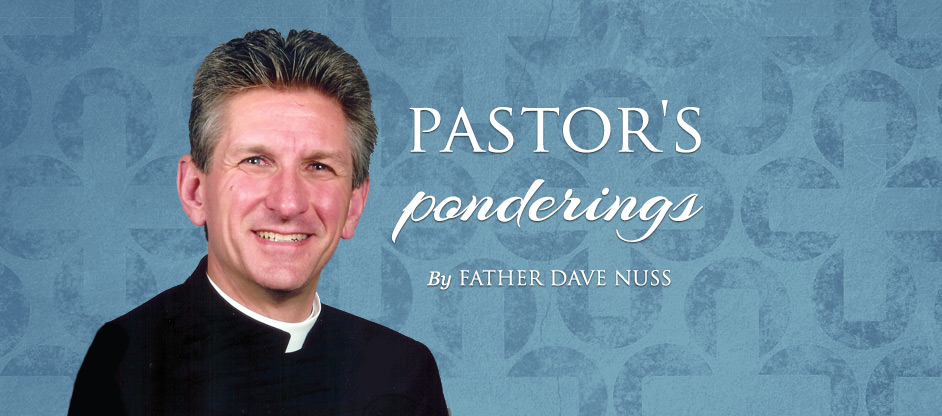Today at Palm Sunday Mass we listen attentively to Luke’s telling of the story about Jesus’ suffering and death; what we more commonly call the “passion of Christ.”
As we can well expect, Luke has his own way of narrating the plot to kill Jesus (Luke 22:14-23:56). From the start of the action, Judas is linked with the chief priests and scribes. The betrayal of Jesus by Judas will occur apart from the swarming crowds of ordinary people who loved Jesus. The crowds are not condemned, but remain sympathetic toward Jesus. However, we also witness the vulnerability of the multitude in their being led into evil by their ambitious leaders. While the treacherous plot is being hatched, Jesus instructs His disciples to prepare the Passover meal.
In Luke’s telling of the Last Supper, the focus is placed upon the meal itself and Jesus long discourse. This is not a surprise to those familiar with this Gospel, for Jesus frequently is dining with others. Luke skillfully blends the action of a meal along with a farewell discourse. In the midst of failure, Jesus instructs and commissions His disciples.
The scene then turns to Gethsemane. Luke presents us with the model of prayer as we see in Jesus what it means to pray in order to avoid temptation. In contrast, we see in the disciples what can happen to those who do not pray.
At His betrayal, Jesus is in control of the situation. The treachery does not limit Jesus power to heal or call sinners to conversion. Luke remains careful throughout this episode to show that it is the leaders of the people who oppose Jesus, not the people themselves.



